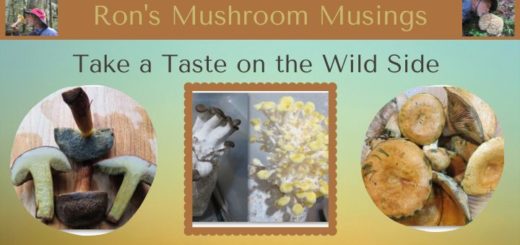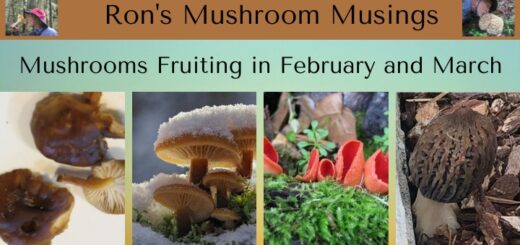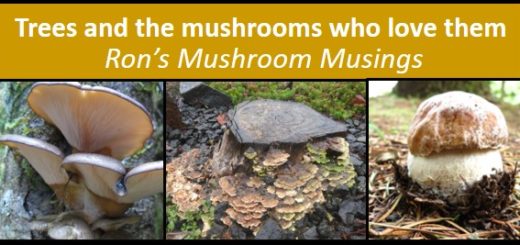Oregon’s Spring Bolete
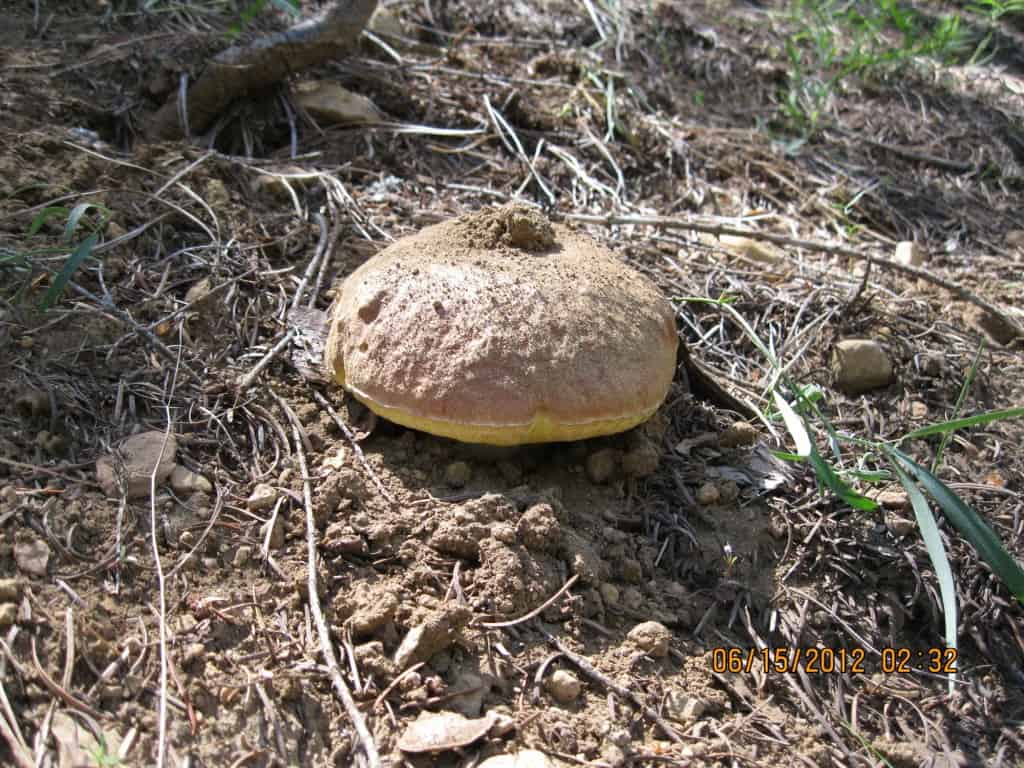
As our spring temperatures begin to warm, whenever that may be, a large hunk of a mushroom starts to fruit in eastern Oregon. This would be what is currently being called Boletus rex-veris, or more commonly called the spring bolete. After years of debate and misidentification, this attractive and sought after mushroom was finally identified and named in 2008. The species name for this mushroom is quite representative as rex is Latin for king and veris is Latin for spring. However, the combined name of king-spring seems a little out of order but what the heck. At least it’s short and to the point. Although, I’ll stick with spring bolete since most people I know refer to it by its common name.
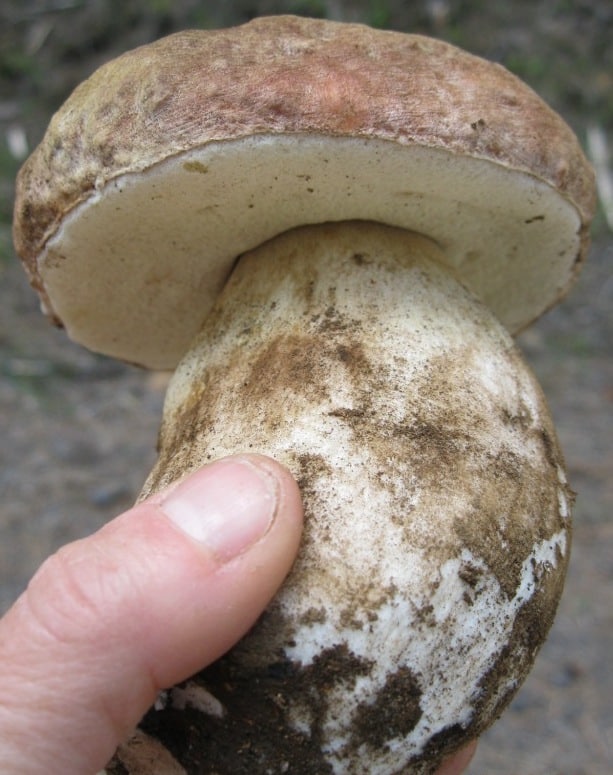
As you can see from the photo it has the traditional hamburger bun cap with a reddish brown color tone and when young can have a white powder at the cap’s margin similar to Boletus regineus, the queen bolete. The stem can be very robust like its cousin Boletus Edulis, the King Bolete, which we find in the fall. The sponge layer under the cap is white when young becoming yellow to yellowish brown in age. The sponge’s surface does not change color when bruised or handled as some species quickly change to blue. The upper part of the stem is reticulated, sporting a fishnet-like pattern.
One might think that such a large honking brute of a mushroom would be fairly easy to spot even from a good distance away. Pray tell, why would you think such a thing? Perhaps it arises from the spring tradition of hiding Easter eggs that inspired both the morel and the spring bolete to also hide, sometimes in plain sight. Unfortunately, the cap of the spring bolete blends in very well with ground surface colors and often times never makes it fully above the ground’s surface layer or duff. This can be a very big problem for drive-by mushroom hunters or those that speed along in the forest looking for easily visible mushrooms.
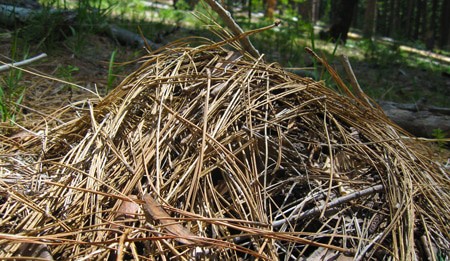
The only identifying feature may be a distinct rise on the forest floor that looks a little out of place, generally covered in conifer needles, leaves, or other surface material. These are commonly referred to as mushrumps. The word arises from combining the word mushroom with humps or bumps.
So, the next obvious question is where does one find such a mushroom or mushrump. In general, if you live in the Willamette Valley you need to drive east where fir trees, ponderosa pines, and other conifers live. They seem to start at elevations around 4,000 feet and continue higher as weather conditions warm. For Eugenians, you can head out 126 toward Sisters and definitely take the scenic Hwy-242 in place of Hwy-20 if it is opened. Another great place to look is anywhere along the Cascade Lakes National Scenic Byway, which I’ll abbreviate as CLNSB. To get there take Hwy-58 at the Goshen exit off of I-5 and continue east for about 74 miles. According to Google, it takes about 1hr23min to arrive at the southern end of the CLNSB. Then drive north stopping at campgrounds, lakeside pullouts, hiking trailheads, points of interest or anywhere that calls out to you. And if you find the right spot at the right time you could be like this lucky lady that scored it big with a little help from her amazing but humble partner.
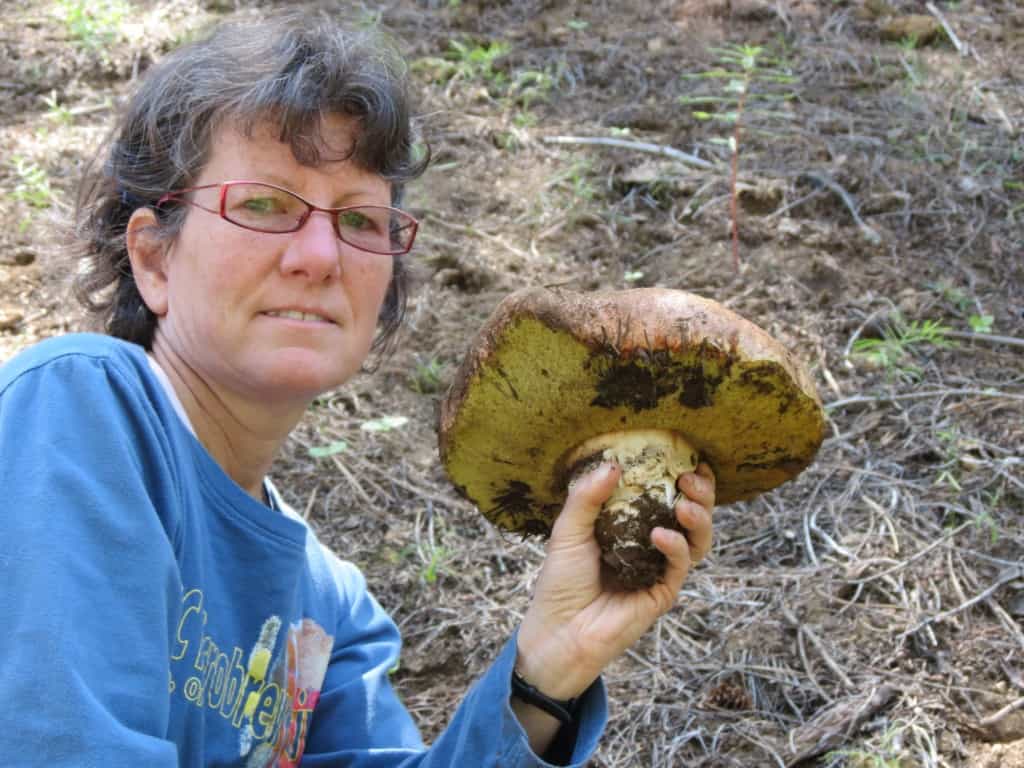
Just don’t leave tomorrow since conditions are not quite right for spring boletes to shrump up yet. So, how will you know when to tank-up (that’s tank, not toke) and head east? For me, the best indicators are what the Mushroomery at Eugene’s Farmers Market and Sundance Natural Foods store on 24th Ave are offering. Blogs and Facebook pages such as the CMS Facebook page, and the PNW Mushroom ID and Info Forum will also share stories about their mushroom scores. Once spring boletes start fruiting you’ll have plenty of time and spots available to find them. Mushroom hunting is supposed to be a relaxing as well as rewarding experience, not a race to the finish. That’s my Zen contribution to this article. Be safe, have fun, and just enjoy the day.
References and Contributions
Ron & Sandy’s personal experiences
Insights from Dustin of the Mushroomery in Lebanon
Spring King Bolete Mushrooms by Anna McHugh on “Crazy About Mushrooms” website
Picture of mushrump found at Hunter Angler Gardener Cook

